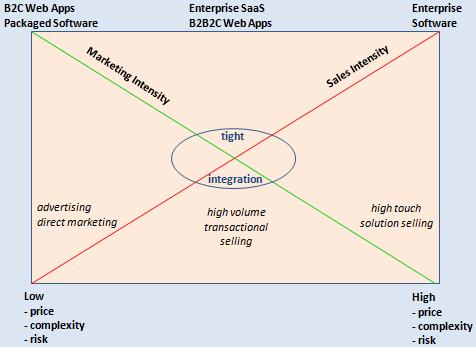The Software as a Service Sales and Marketing Machine
Here is a picture I find myself drawing often. It is closely related my last B2B SaaS post regarding old enterprise habits, but it is actually much more general. Most Web application / Software-as-a-Service companies will find themselves spending up to 50% of revenue on sales and marketing. But, how much should you spend on sales vs. marketing. And, how tightly integrated do these two functions need to be? Of course it is common wisdom that sales and marketing need to work together, but this need is acute for most Software-as-a-Service companies. In enterprise software, where the price point is $100-500K per transaction, the marketing organization is only loosely coupled to revenue through lead generation, messaging /collateral / website, and generating awareness through events and PR. Contrast this with a consumer application, where the tables are turned completely and what sales does exist typically takes the form of partnering and business development—which may be revenue generating, but is not aimed at closing revenue directly, i.e., getting more users.

Most B2B SaaS offerings and B2B2C Web applications (e.g., email marketing, Gadget platforms, online survey research, customer and channel support, etc.) tend to fall right in the middle of this graph. One reason for this is subscription/transaction- based pricing (as opposed to a three year, 1000 user enterprise agreement), as well as the general expectation of a Web or SaaS application to cost significantly less than software. The result is that SaaS companies must continually strive for reduced selling costs, increased marketing efficiency and tighter sales-marketing integration to create a revenue-generating machine—often by leveraging technology to automate as much of the sales cycle as possible from awareness to trial to acquisition and even through to support and add-on selling.
Mục lục bài viết











